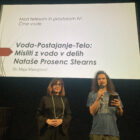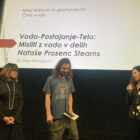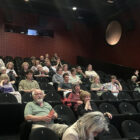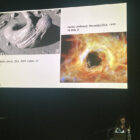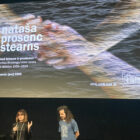Screening of film/video oeuvre 1989–2024
Lecture and screening
Tuesday, 3 June 2025, 7 pm
Slovenian Cinematheque, Miklošičeva cesta 28, Ljubljana
and at Slovenian Film Database (BSF) (3 – 10 June 2025)
The screening will be preceded by a lecture by Dr Maja Manojlović, media and film theorist and lecturer at the University of California, Los Angeles (UCLA).
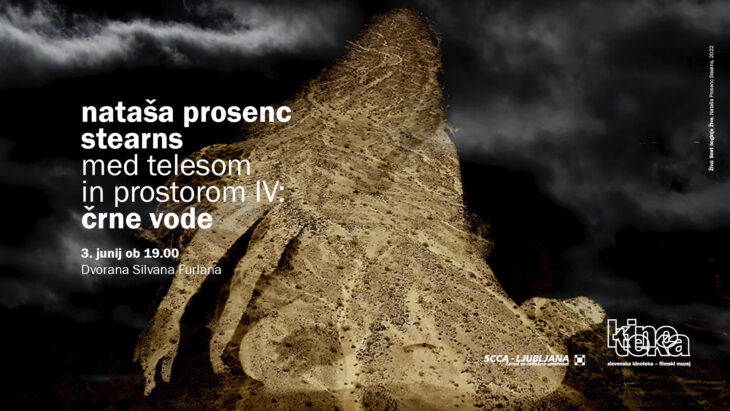
Maja Manojlović
Water-Becoming-Body: “Thinking With Water” in The Works of Nataša Prosenc Stearns
This presentation conceptualizes the notion of “thinking with water” as an aqua-sympoietic process of “making-with” water and “in the company of” many beings, elements, and things, as it figures in the work of visual artist and filmmaker Nataša Prosenc Stearns. I suggest that her aqua-sympoietic creative imaging processes transmute anthropocentrically structured sensorium, perception, and sense-making. Aqua-sympoiesis thus highlights multilayered, ecologically accentuated sensory experiences that expand and modify our sensory-perceptual field, which I call eco-aisthesis. Eco-aisthesis describes experiences that include natural elements and elemental forces but at the same time are outside the established anthropocentric sensory-perceptual patterns. If eco-aisthesis still alludes to human experience, elemental sensorium eludes it completely. These nuances of feeling are detached from our field of experience. However, their ever-elusive sensation is nonetheless felt. Prosenc Stearns thus creates alternative models of experiential potentials that offer planetary perspectives and experiences of inclusion and interconnectedness that are, like water, “always becoming, always different.”
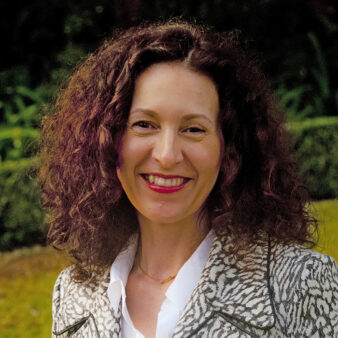 Dr Maja Manojlović‘s jacademic background is in Cinema and Media Studies, specializing in phenomenology, aesthetics, and cultures of digital film and emerging media. She has published in digital aesthetics, 3-D cinema, and documentary film and presented her work at international conferences. Recently, she published articles on “Essentials of Videogame Rhetoric and Design” and “Feeling A Life: Sympoietic Aesthetics in Honeyland.” She is currently writing on eco-aesthetics and the posthuman in Slovenian experimental films. Dr. Manojlović’s research also focuses on multimodality and mindfulness in writing pedagogy and aesthetics in XR (VR, AR, MR) environments. She conceptualized experiences such as Tongva VR/AR, Scribe VR, and Reconnect! The Amazon Medicine Garden. She teaches at the UCLA Writing Programs and Santa Monica College Department of Communication and Media Studies. She is also a co-founder of the UCLA XR Initiative and an affiliate faculty member of the UCLA Laboratory for Environmental Narrative Strategies (LENS). (Photo: Lem Thomas)
Dr Maja Manojlović‘s jacademic background is in Cinema and Media Studies, specializing in phenomenology, aesthetics, and cultures of digital film and emerging media. She has published in digital aesthetics, 3-D cinema, and documentary film and presented her work at international conferences. Recently, she published articles on “Essentials of Videogame Rhetoric and Design” and “Feeling A Life: Sympoietic Aesthetics in Honeyland.” She is currently writing on eco-aesthetics and the posthuman in Slovenian experimental films. Dr. Manojlović’s research also focuses on multimodality and mindfulness in writing pedagogy and aesthetics in XR (VR, AR, MR) environments. She conceptualized experiences such as Tongva VR/AR, Scribe VR, and Reconnect! The Amazon Medicine Garden. She teaches at the UCLA Writing Programs and Santa Monica College Department of Communication and Media Studies. She is also a co-founder of the UCLA XR Initiative and an affiliate faculty member of the UCLA Laboratory for Environmental Narrative Strategies (LENS). (Photo: Lem Thomas)
Between Body and Space IV: Black Waters
Water is one of the central motifs in Nataša Prosenc Stearns’ work. Due to its turbidity, it is an element of abstraction that fills human silhouettes with elemental materiality.
Gaston Bachelard, who wrote studies on all four basic elements, saw water as one of the key elements by which “we disobjectify objects, deform forms”, thus arriving at the substance beneath the object. Water is also the primary element of reflection and, consequently, of the layering of images. In water, images of depth and surface come together, overlapping each other and thus acquiring metaphorical power. One of the key post-production processes of Nataša Prosenc Stearns is the process of amalgamation, where layers of images not only overlap but also influence each other, become contained in each other and visible in each other.
Most of the works in this series have been conceived in the context of spatial video installations linked to gallery and non-gallery spaces. Quite a few of the works live a double life, gallery and film, showing the differences in the context of the two media, but also in the different gallery installations of the same project; for example, the texture and material of the wall on which the image is projected to inscribe itself into it, making it ripple like the reflective surface of the water, thus becoming another layer of the image.
Some of her works have also been created in other contexts, for example, on the theatre stage, such as the opera code L, in which she collaborated with her long-time collaborator, the composer Milko Lazar. Here, the artist used excerpts from other works (Caryatids and Hotel Diary) and a layering technique using movable semi-transparent screens on which images from four projectors were combined, replacing the classical set design. As the images seeped through the screens, combinations that were impossible to predict appeared, creating visually complex, layered abstract images typical of the work of Nataša Prosenc Stearns.
Robert Kuret
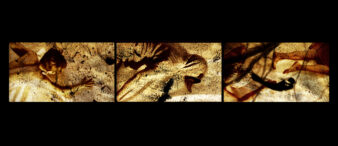
USA / Slovenia, 2018, HD video, 16:9, colour, 2′ 5”
Human bodies are in motion, reminiscent of reptiles. They follow each other in a familiar rhythm that connects them and, at the same time, blends them into their environment.
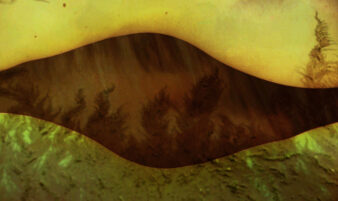
USA, 2016, HD video, 16:9, colour, 2′ 10”
The works in the Black Waters and Other Stories series are moving collages based on the layering of images. They create a world that is not anthropocentric but integrates the human body into an environment constantly expanding, contracting, and changing. The works depict states of constant emergence, the integrity of the body breaking down, establishing new connections with the environment and suggesting new possibilities of regeneration. The works in this series include Bridge, Applause, Knot and Sunset.
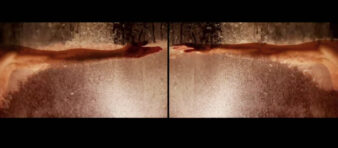
USA, 2016, HD video, 16:9, colour, 2′
The works in the Black Waters and Other Stories series are moving collages based on the layering of images. They create a world that is not anthropocentric but integrates the human body into an environment constantly expanding, contracting, and changing. The works depict states of constant emergence, the integrity of the body breaking down, establishing new connections with the environment and suggesting new possibilities of regeneration. The works in this series include Bridge, Applause, Knot and Sunset.
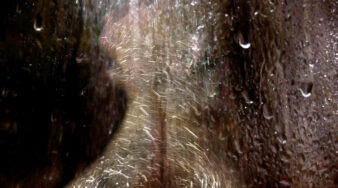
USA, 2016, HD video, 16:9, colour, 1′
The works in the Black Waters and Other Stories series are moving collages based on the layering of images. They create a world that is not anthropocentric but integrates the human body into an environment constantly expanding, contracting, and changing. The works depict states of constant emergence, the integrity of the body breaking down, establishing new connections with the environment and suggesting new possibilities of regeneration. The works in this series include Bridge, Applause, Knot and Sunset.
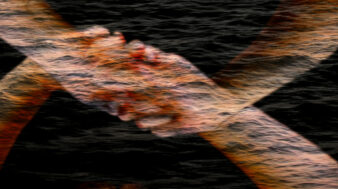
USA, 2016, HD video, 16:9, colour, 3′
The works in the Black Waters and Other Stories series are moving collages based on the layering of images. They create a world that is not anthropocentric but integrates the human body into an environment constantly expanding, contracting, and changing. The works depict states of constant emergence, the integrity of the body breaking down, establishing new connections with the environment and suggesting new possibilities of regeneration. The works in this series include Bridge, Applause, Knot and Sunset.
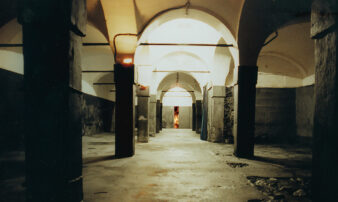
Slovenia, 1998, Betacam video, 3:4, colour, 1′ 39”
Interweaving images of shadows of naked bodies in the shape of a column.
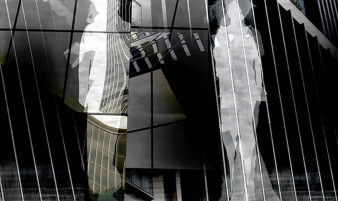
USA, 2017–2024, HD video, 16:9, colour, 2′ 6”
The video brings the idea of caryatids into the present day with silhouettes of women intertwined with elements of contemporary Los Angeles architecture.
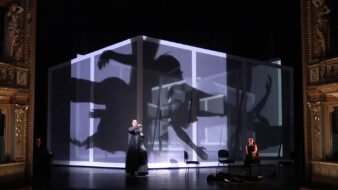
USA / Slovenia, 2019, HD video, 16:9, colour, 4’
Inspired by Roland Barthes’ book A Lover’s Discourse: Fragments, the opera consists of several arias and choruses. The visual part, created by Nataša Prosenc Stearns, consists of four simultaneous video projections on moving translucent screens.
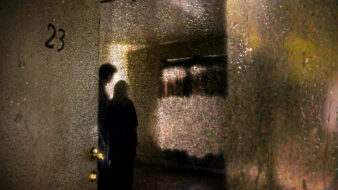
USA, 2016, HD video, 16:9, colour, 6′
A long-forgotten encounter comes alive with fragments of real and imagined memories—a chronicle of a relationship inside an abandoned hotel in Los Angeles.
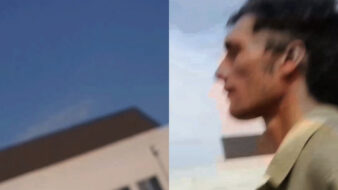
USA, 2014, HD video, 16:9, colour, 2′
The film was created for the Safe Place for Youth charity event at the Santa Monica Museum of Art in April 2014, where artists and young people from the centre paired up to create portraits of each other.
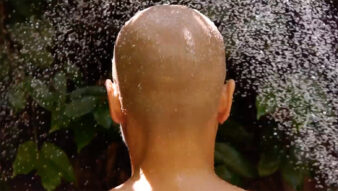
USA, 2015, HD video, 16:9, colour, 4′
Some images have such a strong associative meaning that it is almost impossible to see them independently. A shaved woman’s head is certainly one of them.
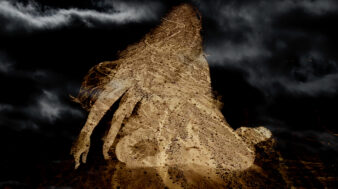
USA / Slovenia, 2022, HD video, 16:9, colour, 10′,
courtesy of Gorenjski muzej/Prešernova hiša Kranj
The Slovenian national epic The Baptism at the Savica (1836) by France Prešeren inspired the film. Živa was the pagan goddess of love and prosperity. The film presents the transformations of the goddess through her relationship with nature, the elements and historical events.
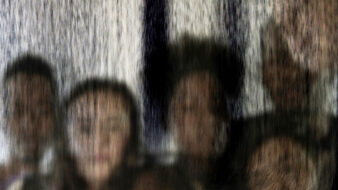
USA, 2022, HD video, 16:9, colour, 5′
An accident cuts into a group of individuals. As they watch the event, their reality turns into a nightmare.
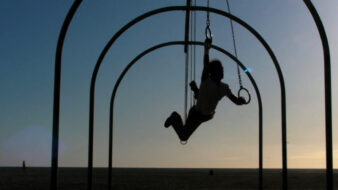
USA, 2019–2023, HD video, 16:9, colour, 3′
A snapshot of Venice Beach, California.
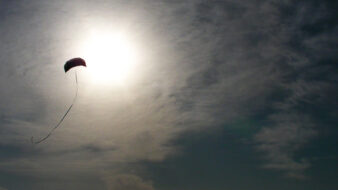
USA, 2018, HD video, 16:9, colour, 2′
Haiku video from the Against the Sun series.
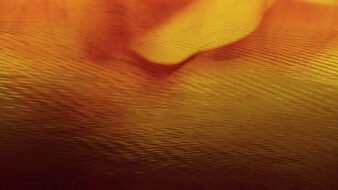
USA, 2016, HD video, 16:9, colour, 2′
The works in the Black Waters and Other Stories series are moving collages based on the layering of images. They create a world that is not anthropocentric but integrates the human body into an environment constantly expanding, contracting, and changing. The works depict states of constant emergence, the integrity of the body breaking down, establishing new connections with the environment and suggesting new possibilities of regeneration. The works in this series include Bridge, Applause, Knot and Sunset.
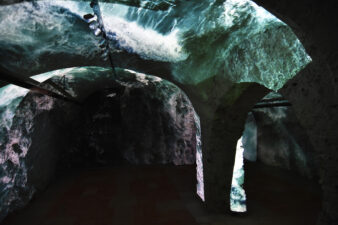
Slovenia / USA, 2001–2022, Betacam video, 3:4, colour, 4′
An installation inspired by the stories of female characters in Prešeren’s poetry.
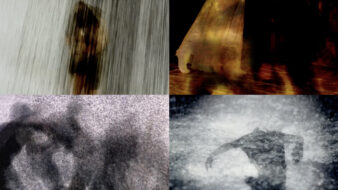
USA, 2022, HD video, 16:9, colour, 3′
Quartet is a collection of videos that are often referred to – literally – as moving pictures for their aesthetic sense.
Between Body and Space IV: Black Waters
3 – 10 June
» View at Slovenian Film Database (BSF)
The fourth programme of the review of Nataša Prosenc Stearns’ film/video oeuvre continues the third strand, focusing even more on her gallery works or installations and thus revealing the archiving of gallery works. This gives us further insight into the artist’s work in the installation field, both in a gallery context and in a theatre context, where the installation becomes the set design for the opera code L, where she combined different images on translucent screens. At the same time, there will also be some works that emerge from the gallery installation but also live on as video/film, such as Crawlers, Emergent Fossils or Dreamscape #1: Lovers, as well as works such as Suspended Colonnade, where the line between the two forms is further blurred.
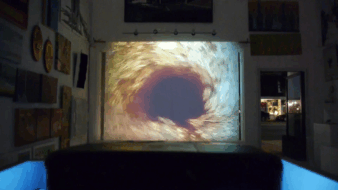
screening documentation, Wallspace, Los Angeles, USA, HD Video, 16:9, colour, 2013, 4′ 21”
Detail from the four-channel video installation Gladiators. A series of images of fire, earth, sand, and snow rotating and disappearing in a circular motion.
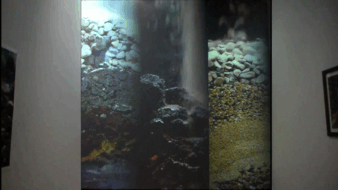
video installation, ECC, Maribor Castle, Maribor Regional Museum, Slovenia, HD Video, 16:9, colour, 2012, 3′ 27”
Capital of Culture Maribor art events in the bastion of the Maribor Regional Museum. The video installation is a reflection of a new historical space. The artist brought the entire space to life with three parallel projections of falling stones, earth, and gravel. The artist was led to earth materials by reflecting on the history of medieval construction. Still, she has made a work in which layers of history come poetically to life as avalanches of geological debris.
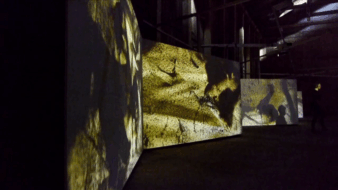
video installation, Monfort Gallery, Portorož / Piran Coastal Galleries, Portal Maribor, Slovenia, HD Video, 16:9, colour, 2016, 2′ 49”
A video made especially for the installation, first installed in the Monfort exhibition space in Portorož, with scenes of human bodies in motion, reminiscent of reptiles. They follow each other in a familiar rhythm that connects them and, at the same time, blends them into the environment. The images are partly abstracted: the bodies and the background are flattened into a single moving structure. Similar to the artist’s other projects in recent years, which focus on authentic experiences of physical existence, test the limits of the body’s capacities and offer the possibility of the body’s supernatural abilities, this installation is a response to the growing anxiety and loneliness caused by retreating into disembodied cyberspace. In the spirit of the belief that most of the answers are hidden precisely in our bodies’ sensations, vibrations, pleasures and pains, these works struggle for the survival of the felt, the authentic and the mysterious.
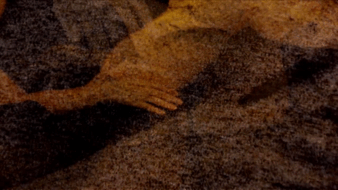
video installation loop, USA, Novo Celje Mansion, HD Video, 16:9, colour, 2016, 8′
Video is a part of Black Waters and Other Stories series – short videos with no narrative structure.
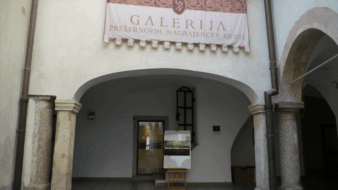
exhibition documentation, Prešeren Award Winners of Fine Arts Gallery, Kranj, Slovenia, HD Video, 16:9, colour, 2016, 5′ 11”
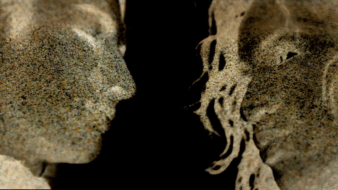
USA, HD Video, 16:9, colour, 2019, 7’ 23”
Dreamscape #1 – Lovers is a moving collage which integrates the human body with the organic world. The process of layering connects visual elements and leads to fragments of narration. Inspired by A Lover’s Discourse: Fragments by Roland Barthes, the video ploughs into the elusive substance of fantasies and dreams of lovers—music from the opera code L by Milko Lazar.
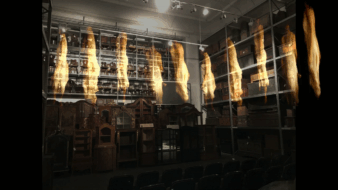
video installation, Maribor Regional Museum, Slovenia, HD Video, 16:9, colour, 2018, 2′ 27”
The video shows a floating female figure, multiplied in numerous variations, creating repetitions of her own image in the rhythm of colonnades. Artistically, the image avoids banality through a transition from a specific figural appearance into abstraction and back again. It resembles the colonnades of Antiquity, while the switching of the internal space into external space in the video brings to mind the colonnade designed by the architect Jože Plečnik around the sadly never realised Cathedral of Freedom.
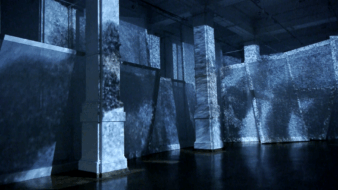
video installation, Kibela, Maribor, Slovenia, HD Video, 16:9, colour, 2019, 1′ 59”
code L – Fragments is a video installation created by two synchronized projections onto transparent screens. They integrate shadows and silhouettes of visitors and reflections of the architectural elements into the body of the installation. What emerges is a space-inside-of-space into which the visitors enter. According to the curator Peter Tomaž Dobrila, “The artist used to place humans at the centre of the natural environment in her earlier works, reappropriating the image of the human body by emphasizing certain parts, such as eyes. In her recent works, however, the human figure blends with the environment; it becomes a body-shadow, moving across the given ambience. The internalization of this relationship unravels the corporeality, unlocks the interior, and highlights the intimacy of the experience. The figures are abstracted into ephemeral creatures, who transcend into eternity of existence and offer the viewer a space for reflection.”
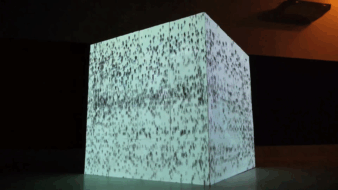
video installation, Kresija Gallery, Ljubljana, Slovenia, Armory Center for the Arts, Los Angeles, USA, HD Video, 16:9, colour, 2014, 2′ 10”
The video installation consists of projections of stylised human figures onto the sugar cube (2 x 2 x 2 m). Although sugar has been tarnished recently for health reasons, it has played an important role in history. It has been as important a commodity as oil is today, shaping world geopolitics and the economies of the most critical countries wherever sugar cane thrives.
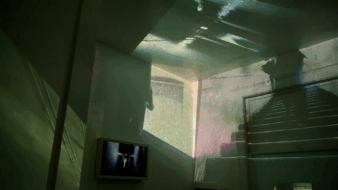
video installation, Velenje Gallery / Galerija Božidar Jakac Gallery / The Rendon Gallery / Strada Los Angeles, Velenje / Kostanjevica na Krki / Los Angeles, Slovenia / USA, HD Video, 16:9, colour, 2016 / 2018 / 2020-, 4′ 29”
A video installation of a series of videos entitled Hotel Diary was displayed together with a Golden Curtain video installation at the exhibition at Velenje Gallery in 2016. Videos were recorded with a static camera in an abandoned hotel in Los Angeles to capture the atmosphere of memories and stories. It is a part of a series of videos entitled.
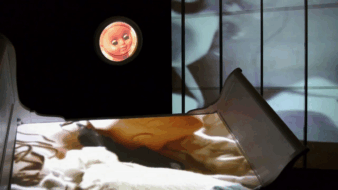
Kanalya Pictures, video installation, Phantom Galleries / LACMA (Tarfest) / Wallspace Gallery / SCCA Project Room, Los Angeles / Ljubljana, HD Video, 16:9, colour, ZDA / Slovenia, 2008 / 2010 / 2012 / 2013, 2′
Video is a documentation of the same-named exhibition – installation, where two looped videos are projected on a gallery window and a bed. The rolling dolls with perky plastic cheeks and the soft, sad-eyed plush pets in this installation invoke a deeply buried nostalgia for the loss of an affective sense of materiality that is, paradoxically, generated by the post-industrial hyper-production of “things.” As our environment is cluttered with an unprecedented excess of material objects, our culture witnesses a steadily dissolving ability to infuse these objects with emotion. It is this emotional investment that animates our relationship with objects and with materiality as such.
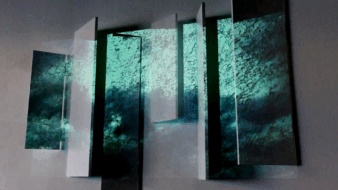
video object, MF Gallery, Los Angeles, USA, HD Video, 16:9, colour, 2017 / 2024, 1′ 52”
Trees of Savannah, water, stream, wind. Part of a series of five video objects with the common title Parallax.
Photo: SCCA-Ljubljana archive
Nataša Prosenc Stearns: Between Body and Space
Programme at Slovenian Cinematheque and Slovenian Film Database (March-June 2025)
21 March / 1 April / 17 May / 3 June
Production: SCCA-Ljubljana and Slovenian Cinematheque
Curators: Vesna Bukovec, Robert Kuret
Nataša Prosenc Stearns is a video artist and a filmmaker who works with a wide range of moving image production and presentation, from scriptwriting, filming and editing to spatial installations, video objects and prints. The presentation of Nataša Prosenc Stearns’ film and video oeuvre, entitled Between Body and Space, is a selection of her work, which includes four programmes: Vortex, Process, Vertical Horizon and Black Waters. The first two programmes are still flirting with the fictional form. At the same time, the other two are already entirely experimental, with works of radically different aesthetics, genres and production contexts within a single strand, created in different periods from the late 1980s to the present day.
Co-production: SCCA-Ljubljana/DIVA Station and Slovenian Cinematheque
Partner: Slovenian Film Database (BSF)
Supported by: Ministry of Culture of the Republic of Slovenia, City of Ljubljana – Department of Culture
Thanks: Maja Manojlović, Rok Omahen, RTV Slovenia, Slovenian Film Archive, Slovenian Film Centre, Slovenian Film Database
![]()
![]()
![]()
![]()
![]()
![]()

